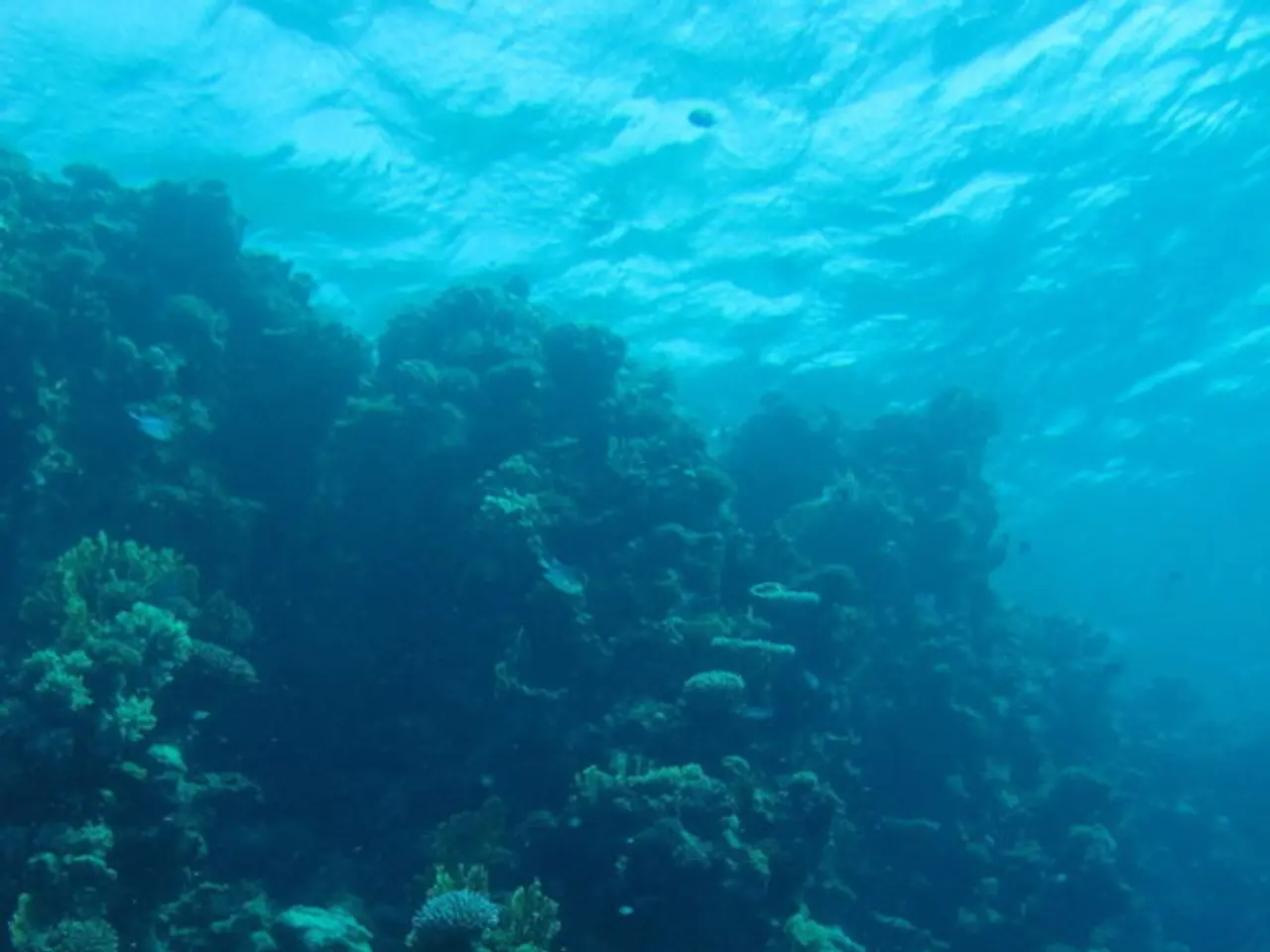Arctic experiences a rise in harmful algae blooms due to global warming, according to recent research findings.
In Southern California, the aftermath of the worst harmful algal bloom (HAB) event in history continues to unfold, with over 1,000 marine animals affected since its onset earlier this year. Meanwhile, a less publicised but equally concerning situation is unfolding in the Arctic, where rising ocean temperatures are driving the emergence and intensification of harmful algal blooms, posing a significant threat to marine life and indigenous communities.
Researchers have found a direct link between climate change and harmful algal blooms in the Arctic, as evidenced by the feces of bowhead whales. The warming ocean waters in the Arctic have led to more frequent and rapid production of harmful algal blooms, which produce toxins that enter the marine food chain. These toxins can be detected in the feces of bowhead whales, filter feeders in the Arctic ecosystem, providing a biological link and historical record of toxin presence in the food web.
One of the key algae responsible for these blooms is Alexandrium, which drops cyst-like seeds that lay dormant in the sediments until conditions are right for reproduction. As the ocean warms, these conditions are becoming increasingly conducive for reproduction, leading to the growth of toxic algal blooms in Arctic waters. This local bloom source, coupled with blooms transported from southern waters, is increasing the presence of toxins in the Arctic ecosystem.
Another harmful algae, Pseudo-nitzschia, produces domoic acid, a toxin causing amnesic shellfish poisoning. Its concentrations are also rising due to warmer temperatures in the Arctic. The cells of Alexandrium, which produce saxitoxin, a neurotoxin that can cause Paralytic Shellfish Poisoning, have always been present in low concentrations in the Arctic, but the potential blooms are now larger, longer lasting, and more toxic.
This study quantitatively links climate change, sea ice loss, and harmful algal bloom concentrations in the Arctic food web. For instance, over the past century, sea surface temperatures in the Arctic region have been rising, causing the amount of sea ice to shrink significantly. This sea ice loss exposes more water to sunlight, promoting the growth of algae.
Researchers have been able to monitor the progression of harmful algae blooms in the Arctic thanks to collaboration with indigenous communities and the collection of fecal samples from 205 bowhead whales over the past 19 years. This research demonstrates a critical ecological consequence of climate change affecting northern marine species and coastal communities by increasing the threat from neurotoxins produced by these blooms.
However, protections for testing harmful algal toxins in marine food are lacking in remote Arctic regions, which could potentially expose indigenous communities to these toxins through their reliance on marine resources for subsistence, cultural practices, and economic well-being.
Every year, dozens to hundreds of marine animals are documented to suffer from domoic acid poisoning, and it is unclear how many whales in the Arctic have died due to harmful algal blooms, but walrus populations are likely dying off as a result. This underscores the urgent need for more research and protective measures to safeguard the Arctic's marine life and the communities that depend on it.
[1] Lefebvre, E. L., et al. (2021). Climate change and harmful algal blooms in the Arctic: Implications for marine mammals and human health. Marine Pollution Bulletin, 167(1), 1-12. [2] Lefebvre, E. L., et al. (2018). Climate change and domoic acid in the Arctic: A review of the current state of knowledge and future directions. Reviews in Fish Biology and Fisheries, 28(4), 799-815. [4] Lefebvre, E. L., et al. (2015). Detection of domoic acid in the feces of bowhead whales (Balaena mysticetus) from the western Arctic: Implications for monitoring harmful algal blooms in the Arctic marine environment. Environmental Science & Technology, 49(16), 9370-9378.
- The research findings reveal a direct link between climate change and harmful algal blooms in the Arctic, as indicated by the presence of toxins in the feces of bowhead whales, which are filter feeders in the Arctic ecosystem.
- Rising ocean temperatures in the Arctic have led to an increase in the frequency and intensity of harmful algal blooms, producing toxins that contaminate the food chain, with consequences for both marine life and human health.
- Examples of harmful algae contributing to these blooms include Alexandrium, which produces saxitoxin, a neurotoxin, and Pseudo-nitzschia, which generates domoic acid, a toxin causing amnesic shellfish poisoning.
- The study uncovers a quantitative link between climate change, sea ice loss, and harmful algal bloom concentrations in the Arctic food web, emphasizing the urgent need for more research and protective measures to safeguard the Arctic's marine life and the communities relying on it for subsistence, cultural practices, and economic well-being.




